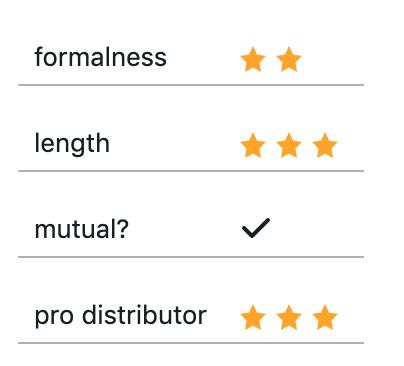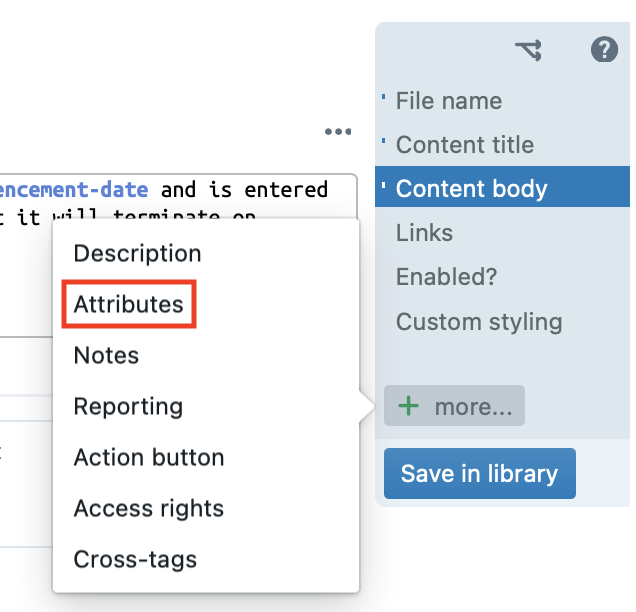Introduction
In order to simplify the search process when users are trying to look for a file (e.g. a clause or a document), you can assign “attributes” to files. These are meant to describe certain properties of a file, e.g. that it is written in favor of a certain party, that it is a very long or formal clause, that it is written as a bullet in a list, etc.
In the search results, attributes are shown as follows:

Assigning an attribute to a file
Only clauses, documents, binders and definitions can be assigned attributes. Other types of files do not have this feature.
If you are creating a new file or editing an existing file, you can click the “attributes” button on the right hand menu.

Having opened the attribute editor, you can click the button “select attribute to add”. Now you can choose (or look for) an existing attribute to add to the clause you are editing.
Creating new attributes
ClauseBase provides for a standard list of attributes available for every customer. However, it is very likely that your organisation requires other attributes to efficiently classify clauses.
As the creation and deletion of attributes can affect all users and clauses, this is something that can only be done by the administrator of a customer’s account. Careful consideration is required prior to creating an attribute to avoid cluttering the database.
Of course, even more care is required when deleting an attribute as this will affect all clauses to which the relevant attribute was assigned. Additionally, it may affect user’s ability to retrieve certain clauses in the absence of a certain attribute they were used to filtering on.
Logging in to the admin account of your customer, you can browse to the “admin” page. Under the tab “attribute models” you can view all existing attributes grouped alphabetically, per type or per category label as well as create new attributes.
When creating new attributes, careful consideration must be given to the “access bundle” for the attribute, i.e. which group(s) of users will be able to assign the attributes to their clauses.
Types of attributes
| numeric | Assigns a numeric value to a file. E.g.: “number of parties”. | |
 | min/max | Assigns a numeric value to a file between a minimum and maximum value. |
| true/false | Assigns a true value to a file. Can be used to describe certain properties of the contents of a file. E.g.: “written in we-form”. | |
| tags | Enables users to give one or more tags to a file. E.g.: tags attribute “industry” which can then be tagged with “health care”, “energy”, “real estate”, etc. The admin can suggest certain predefines. | |
| rating | Enables users to give a star rating (out of a total of 5 stars) to a file. E.g.: the extent to which a clause is “purchaser friendly”. |